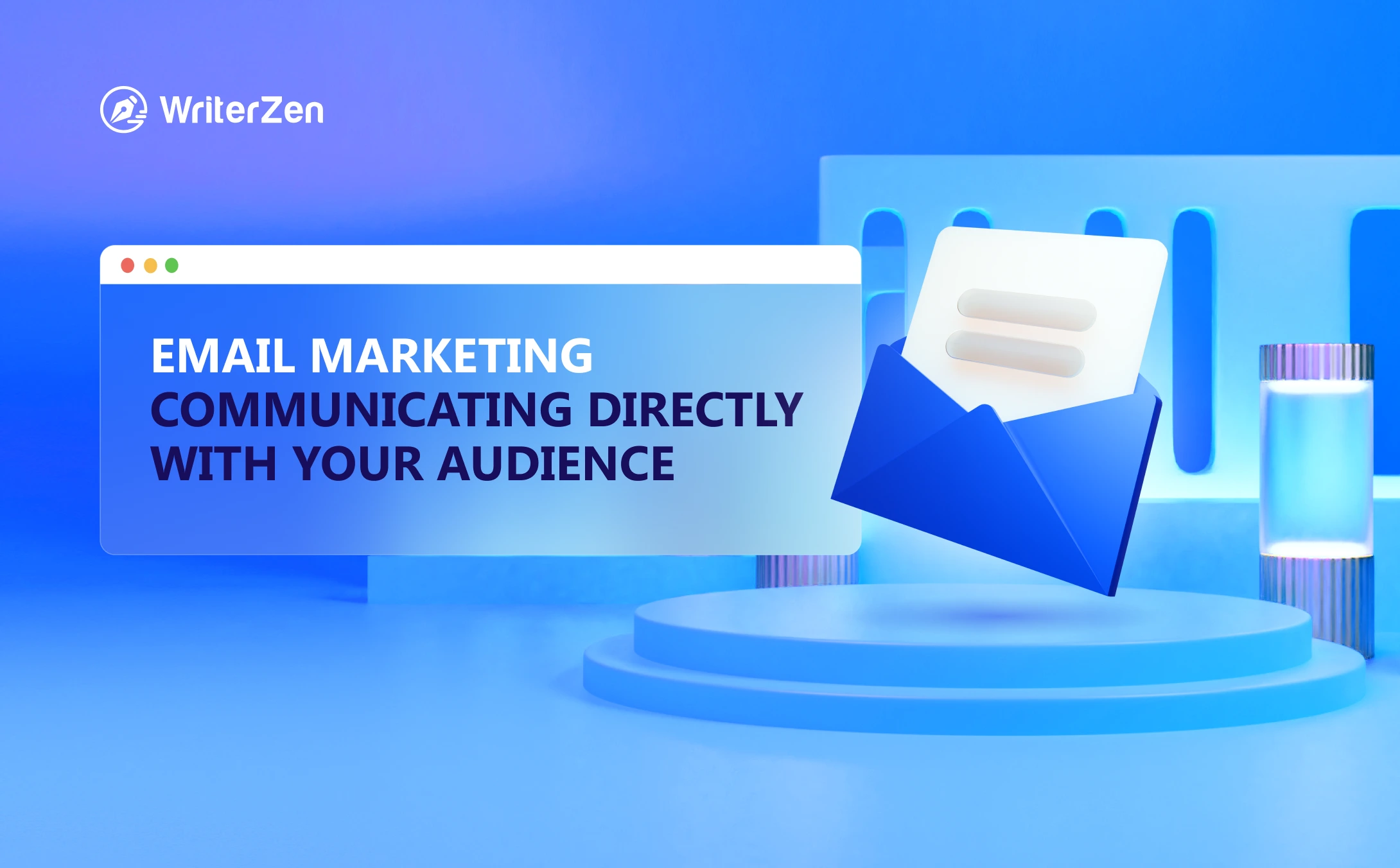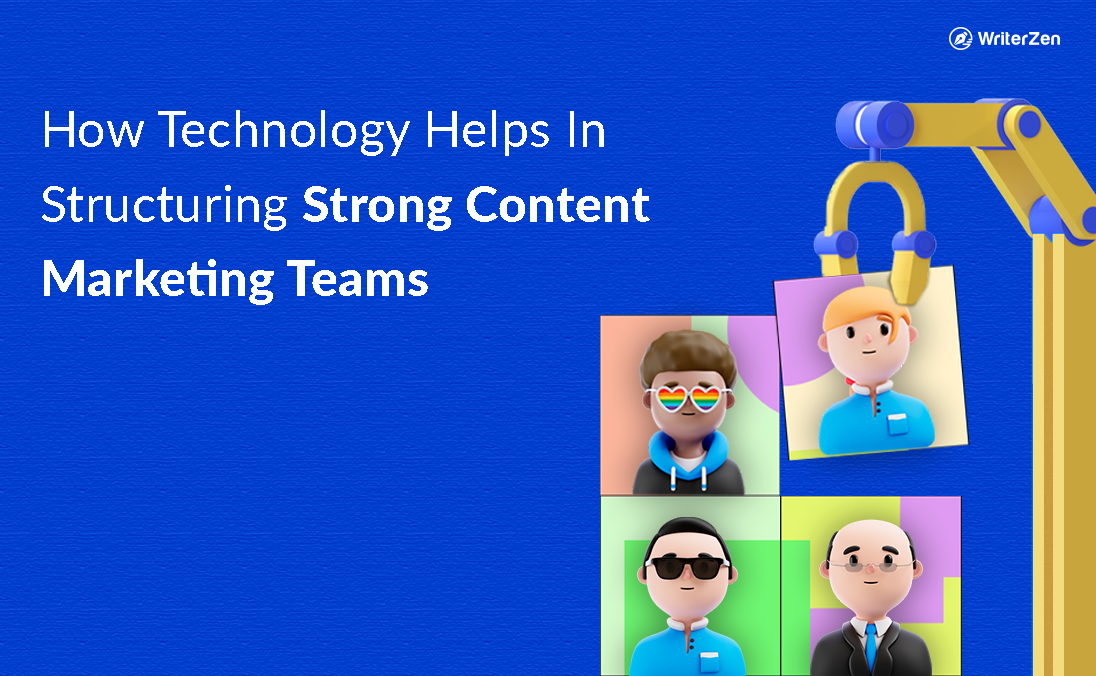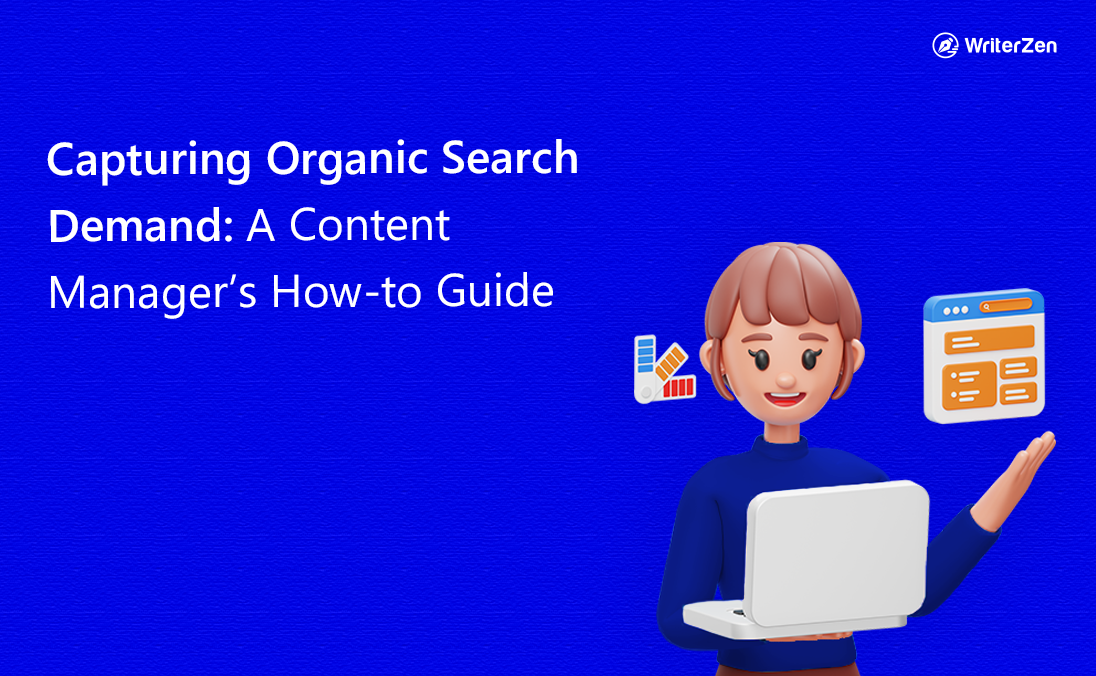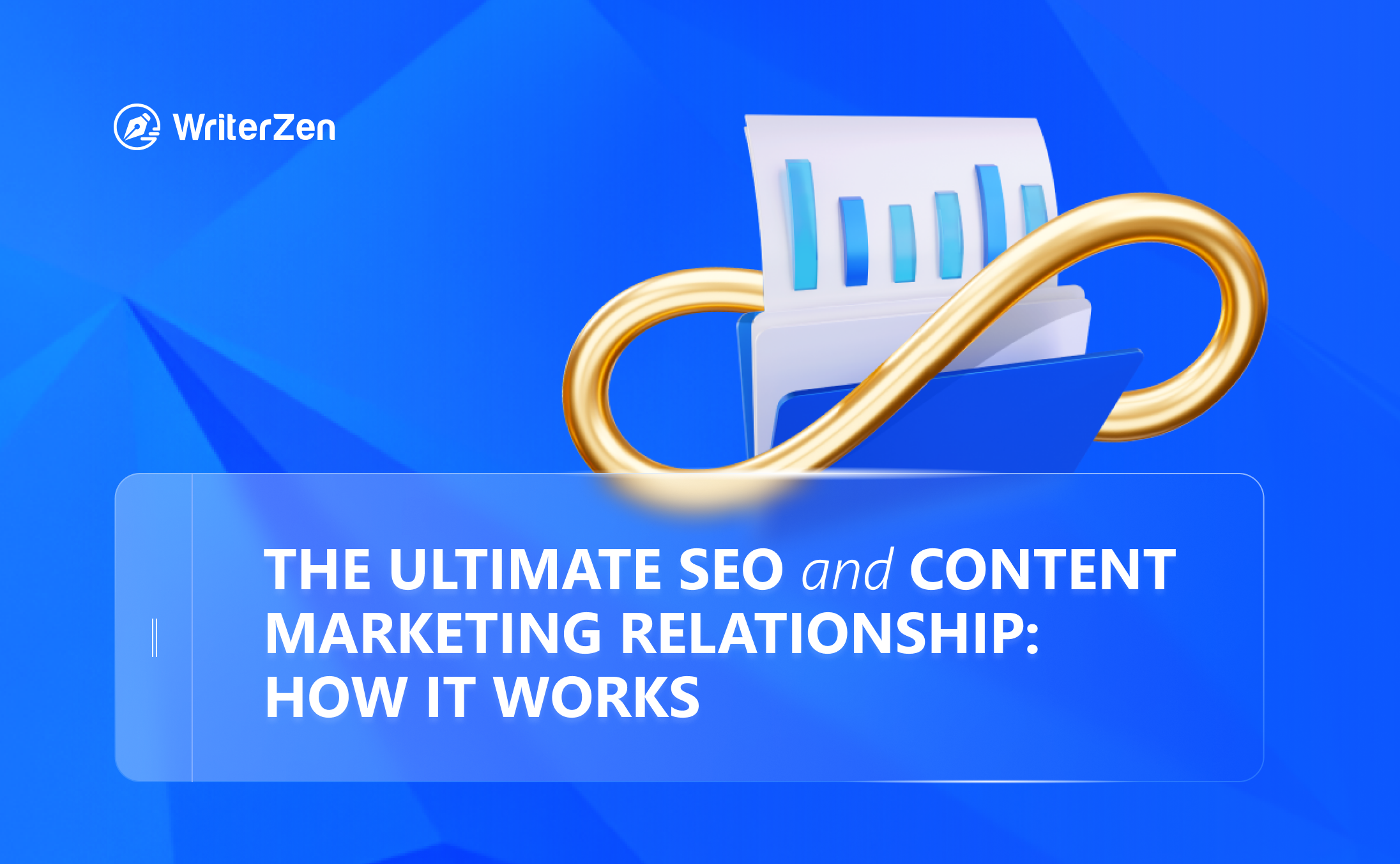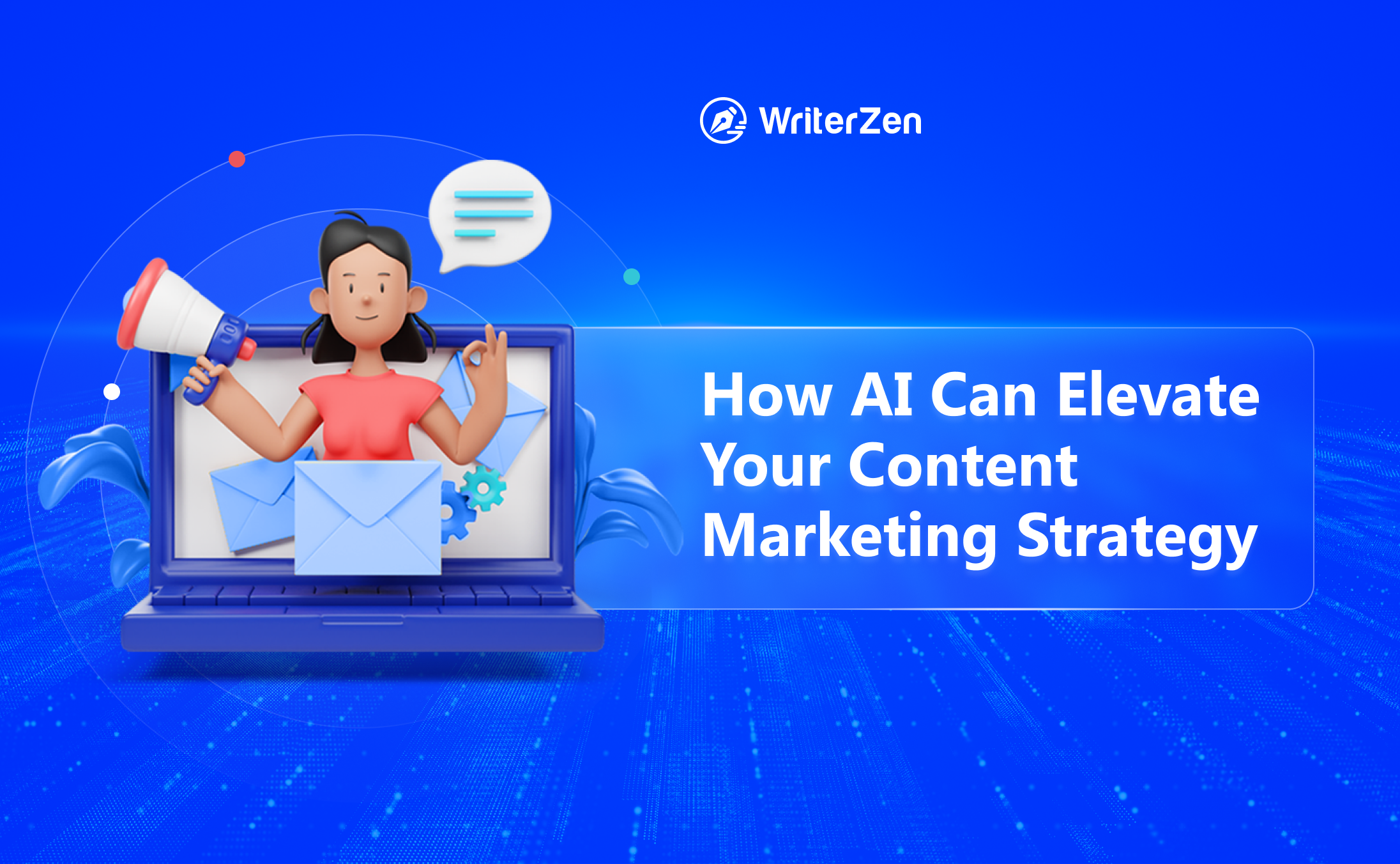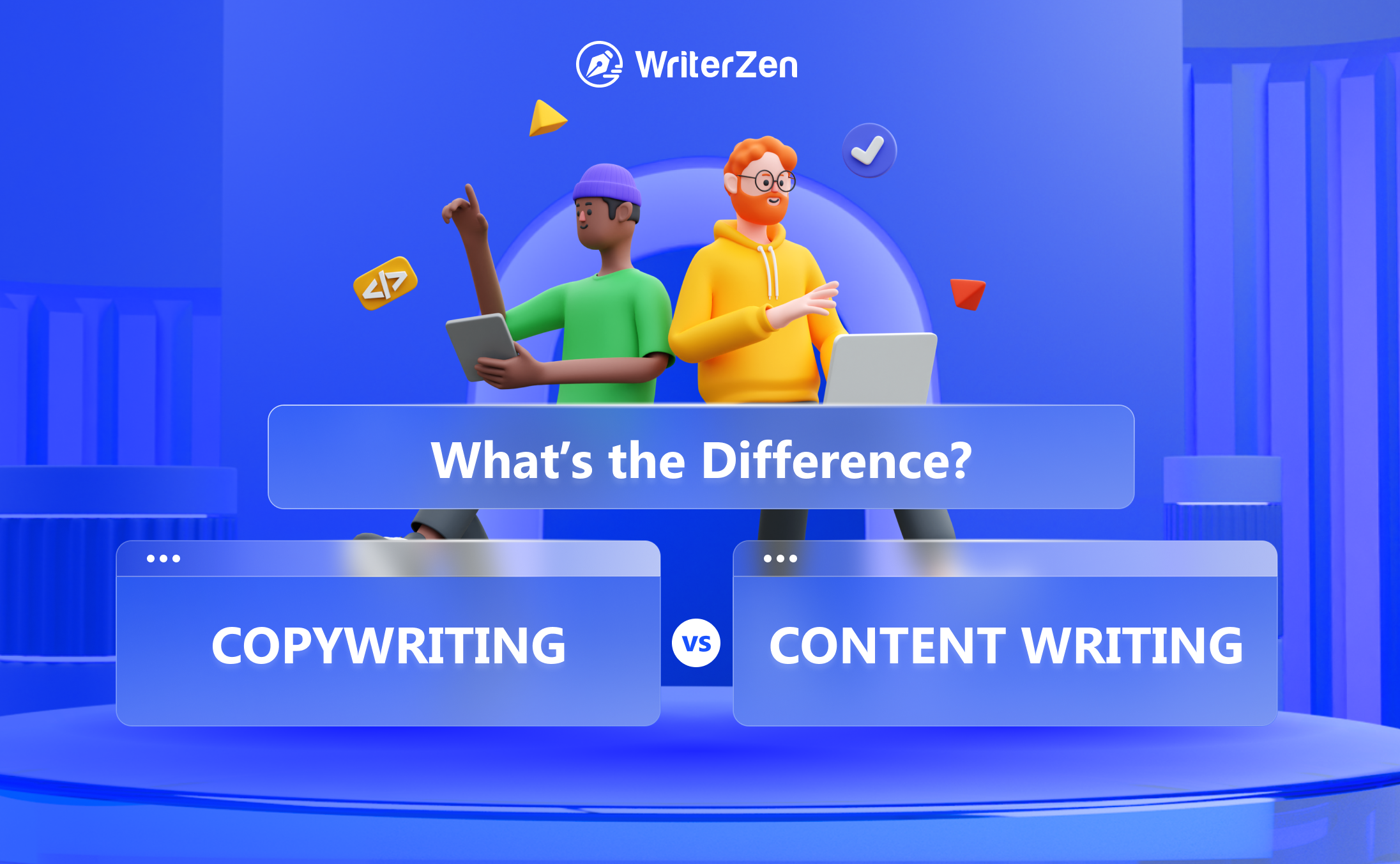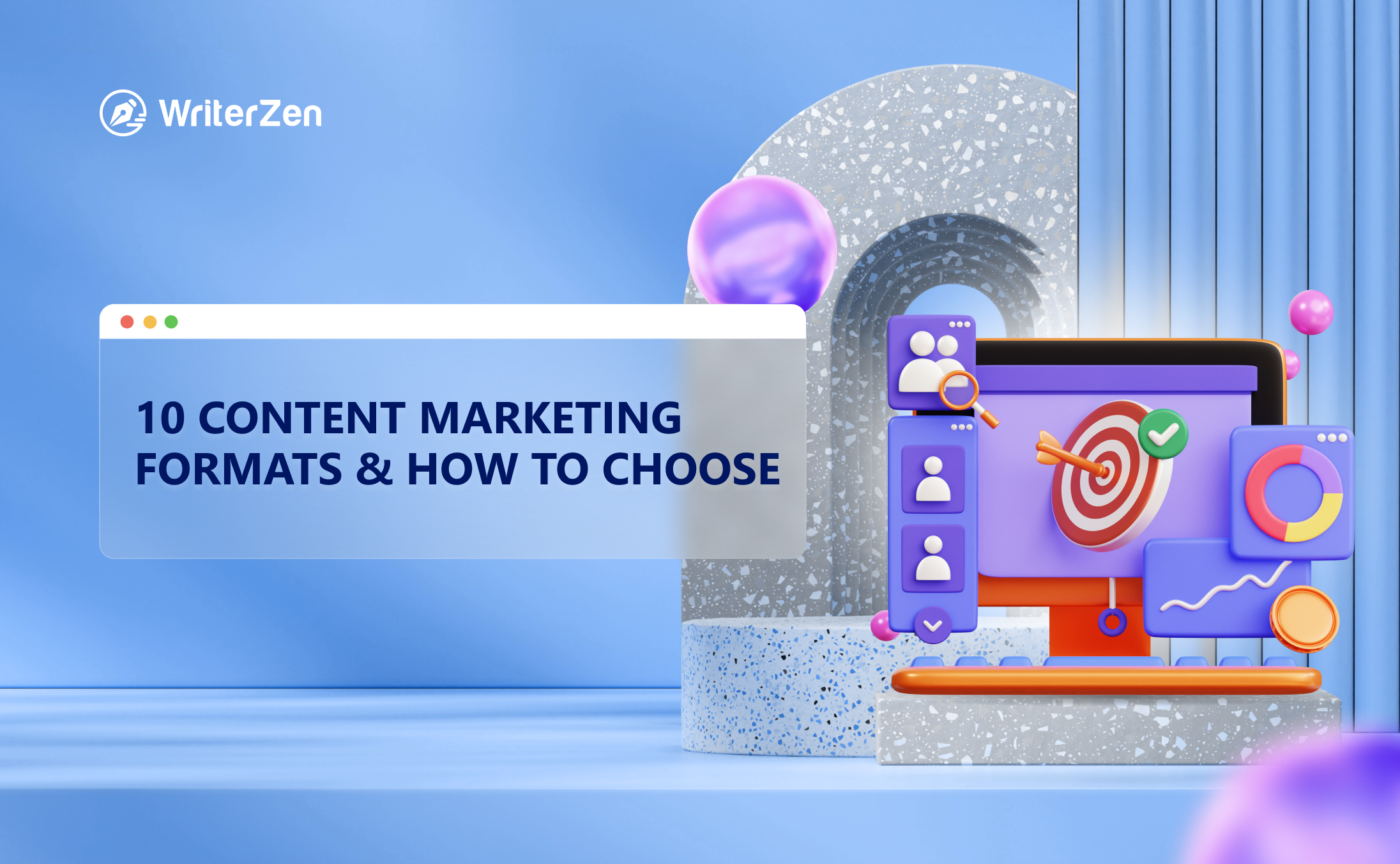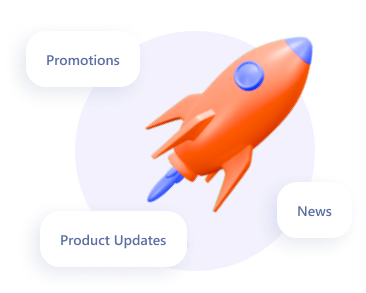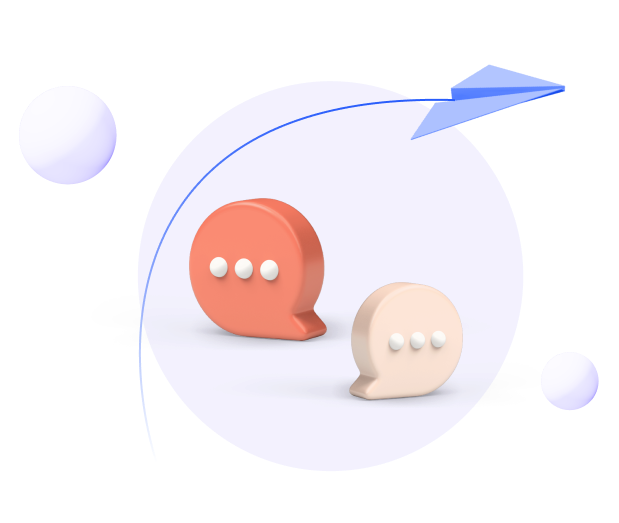While social media and content marketing tend to dominate the digital space, email marketing remains a solid and effective tool for reaching your audience. When executed correctly, it can drive significant engagement, generate leads, and foster lasting customer relationships.
In this blog, we will delve into the world of email marketing, exploring its various types and goals and how to apply them effectively in your digital marketing endeavors.
What Is Email Marketing?
Email marketing is a highly effective digital marketing strategy that can be defined as sending targeted messages via email to a group of individuals who have willingly subscribed to receive communication from your brand. It allows businesses to connect directly with their audience, delivering personalized content, offers and updates straight to their inbox.
Unlike unsolicited emails, email marketing relies on permission-based marketing, meaning that recipients have explicitly opted in to receive emails from the brand, indicating their interest and willingness to engage with the content.
By utilizing email, marketers can build relationships, nurture leads, and drive conversions with a higher degree of control and precision.
So, What Exactly Are the Goals of Email Marketing?
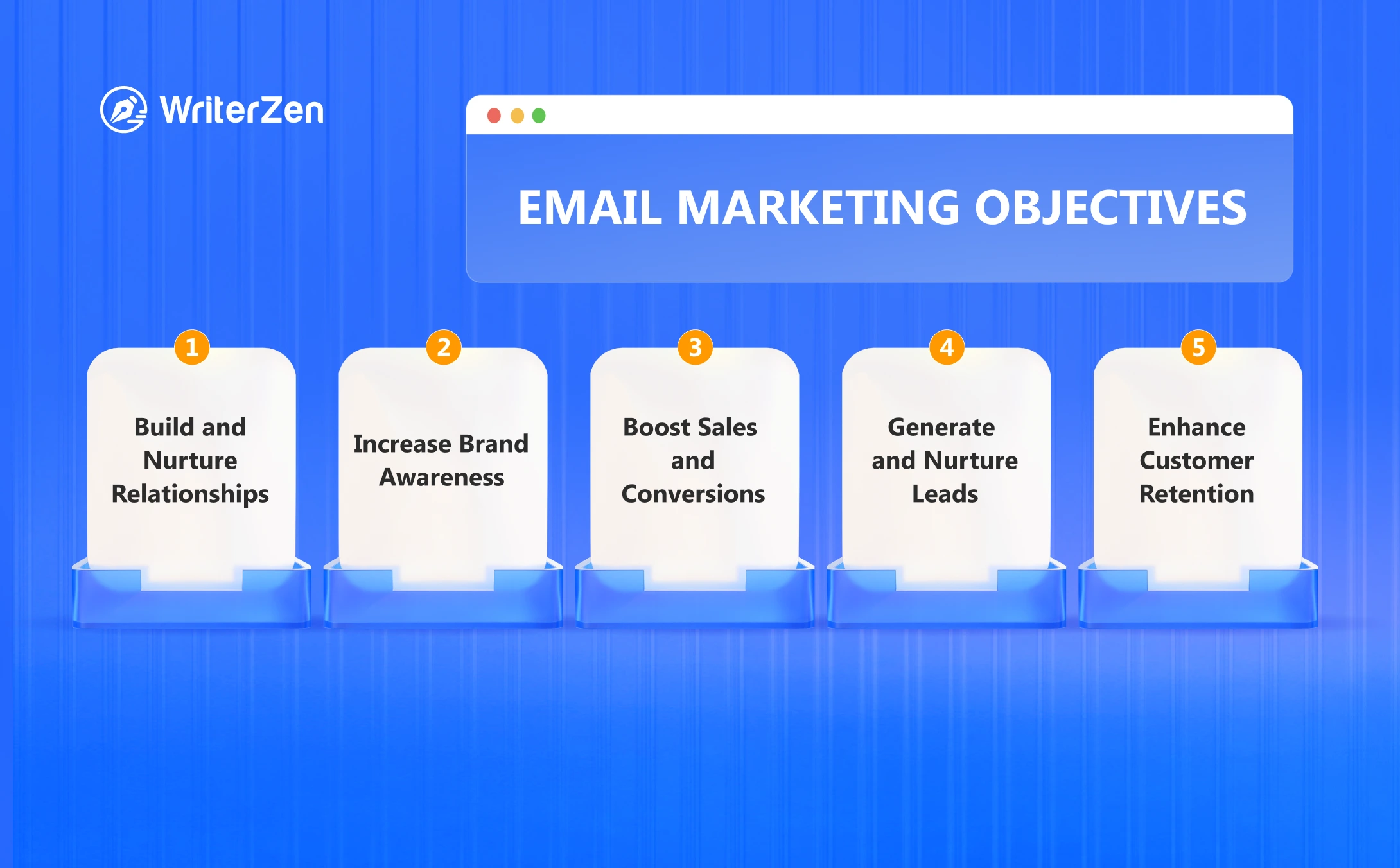
Build and Nurture Relationships
Email marketing allows you to establish trust, strengthen connections, and create a sense of loyalty with your audience by delivering relevant and valuable content. By consistently engaging with your subscribers through email, you can build a relationship based on trust and credibility. Here's how email marketing can benefit your business in various ways:
Increase Brand Awareness
Through consistent communication, email marketing allows you to reinforce your brand's message, mission, and values. By regularly appearing in your subscribers' inboxes with valuable content, promotions, and updates, you keep your brand at the top of their minds. This helps to increase brand awareness and recognition, making your audience more likely to choose your products or services when the need arises.
Boost Sales and Conversions
Effective email marketing campaigns can motivate subscribers to take action. By carefully crafting compelling email content and incorporating persuasive calls-to-action (CTAs), you can drive conversions and sales. Whether it's promoting a limited-time offer, showcasing new products, or sending personalized recommendations, email marketing can be a powerful tool to encourage your subscribers to make a purchase or engage with your business.
Generate and Nurture Leads
Email marketing plays a crucial role in lead generation and nurturing. By capturing email addresses through opt-in forms, you can build a valuable database of potential customers. Through strategic email sequences and personalized content, you can nurture these leads, providing them with relevant information, addressing their pain points, and guiding them through the sales funnel. This personalized approach helps build trust and increases the likelihood of conversion.
Enhance Customer Retention
Email marketing allows you to provide ongoing support, exclusive offers, and personalized recommendations to your existing customers. By sending targeted emails that address their specific needs, preferences, and purchase history, you can foster customer loyalty and encourage repeat purchases. Regularly engaging with your customers through email helps to maintain a strong relationship, reducing customer churn and increasing customer lifetime value.
Types of Email Marketing
Email marketing campaigns can take various forms, such as newsletters, promotional emails, event invitations, product updates, or automated email sequences. Newsletters are a popular format for providing subscribers with regular updates, industry insights, helpful tips, or curated content. Promotional emails are designed to highlight sales, discounts, new products, or special offers to encourage conversions and drive revenue.
Newsletter Emails
These regularly scheduled emails play a vital role in maintaining communication and building strong relationships with subscribers. By delivering valuable content, industry news, and updates directly to their inbox, newsletter emails keep subscribers informed and engaged.
They provide an opportunity to showcase expertise, share relevant insights, and establish the brand as a trusted source of information. These emails help create a sense of loyalty, increasing the likelihood of continued engagement and future conversions.
Promotional Emails
The goal of promotional emails is to generate conversions by focusing on specific products, services, or offers. These emails create a sense of urgency and highlight the value proposition to motivate recipients to take action.
Through persuasive messaging, like compelling headlines, persuasive copywriting, and clear calls to action, promotional emails aim to capture the attention and interest of subscribers.
Incentives, such as exclusive discounts, limited-time offers, or freebies, are often included to further entice recipients to make a purchase or engage with the brand.
Drip Campaign Emails
Automated email sequences, often referred to as drip campaigns or autoresponders, are pre-planned series of emails triggered by specific events or user actions.
For example, a welcome email sequence can be triggered when a new subscriber joins the email list, providing them with a warm introduction to the brand and guiding them through the onboarding process.
Abandoned cart emails can be sent to customers who added items to their online shopping carts but did not complete the purchase, reminding them of their unfinished transaction and potentially offering incentives to complete the purchase.
Transactional Emails
They are generated in response to a user's action or behavior, such as order confirmations, shipping notifications, or password resets. While primarily functional, these emails present an opportunity to cross-sell or upsell.
How to Apply Email Marketing in Digital Marketing
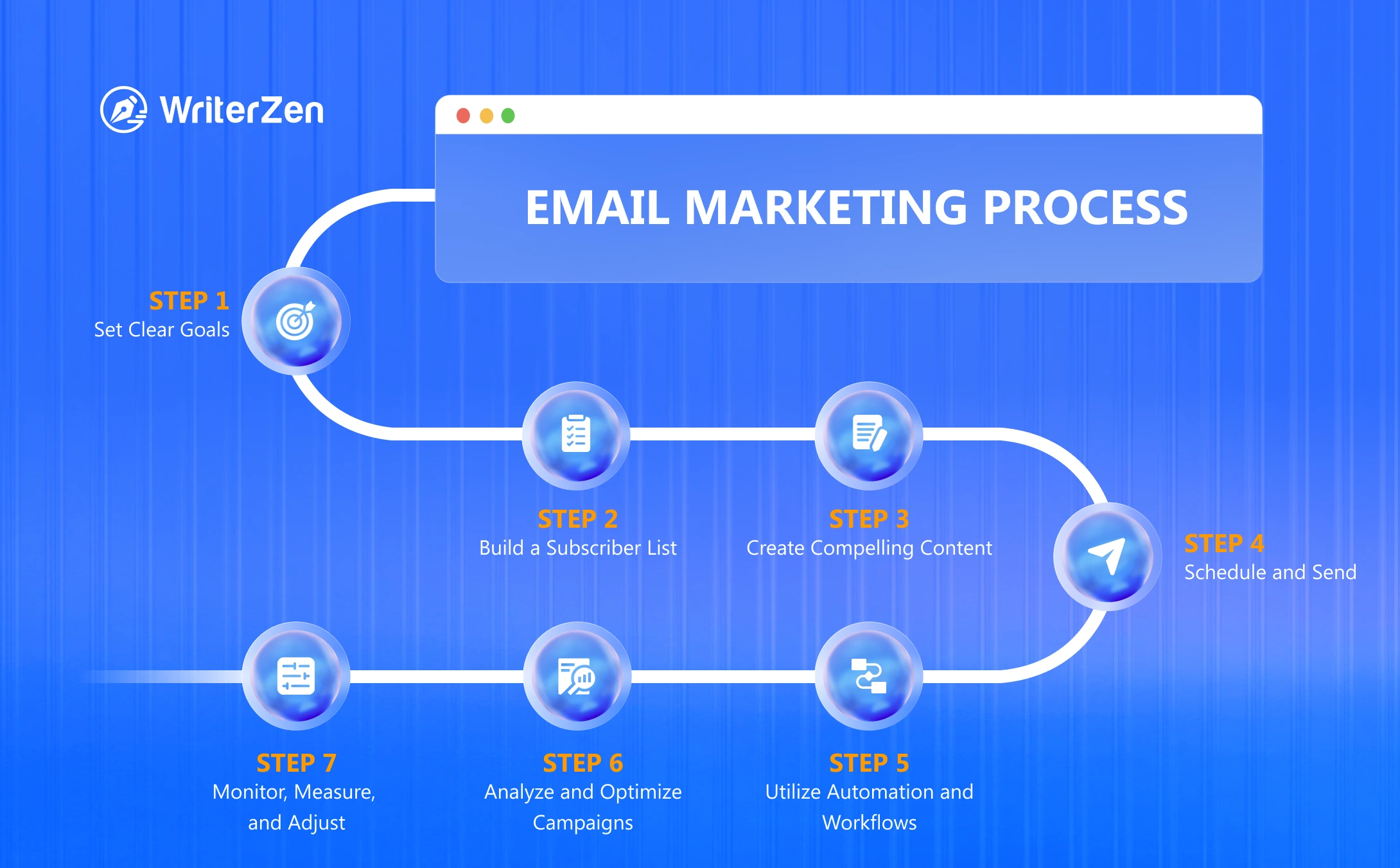
1. Define Your Goals
Start by identifying the specific goals you aim to achieve through email marketing. Whether it's increasing brand awareness, driving conversions, nurturing leads, or enhancing customer retention, clearly defining your objectives will guide your campaign planning and measurement.
2. Build a Subscriber List
Building a high-quality subscriber list is the lifeblood of your email marketing efforts. The goal here is to attract and engage individuals who are genuinely interested in your brand, products, or services. A well-structured and engaged subscriber list can significantly enhance the effectiveness of your email campaigns.
Some subscriber list building strategies include opt-in website forms, gated content, and social media promotions.
3. Craft Compelling Content
In this step, you'll create content that resonates with your audience's interests and aligns with your marketing objectives. Whether it's informative newsletters, enticing promotions, or drip campaigns, your content should deliver value and capture your subscribers' attention. Consider the timing and frequency of your emails, maintain a content calendar for consistency, and ensure a balance between promotional and informative content.
Personalization, engaging visuals, and a clear call-to-action are essential components to maximize open and click-through rates, driving your subscribers to take the desired actions.
4. Schedule and Send
Here, you determine the optimal timing and frequency for delivering your emails. This crucial phase ensures that your messages reach your audience when they are most likely to engage.
To do this effectively, consider factors like your audience's time zone, their preferences, and the nature of your content. Create a well-structured email calendar to maintain consistency while avoiding overload.
By sending emails at the right moments, you maximize open rates and increase the chances of achieving your email marketing goals.
5. Utilize Automation and Workflows
Next step, you leverage technology to streamline your email marketing.
Set up automated workflows triggered by specific actions or events, such as welcome emails, abandoned cart reminders, or post-purchase follow-ups. Automation not only saves time but also ensures timely and relevant communication with your subscribers.
By nurturing leads and providing personalized content based on their behavior, you enhance the overall customer experience, ultimately leading to higher engagement and conversions.
6. Analyze and Optimize Campaigns
This step involves regularly scrutinizing key performance metrics like open rates, click-through rates, conversions, and unsubscribe rates. Conduct A/B testing to refine elements like subject lines, content, and calls to action for continuous improvement.
By meticulously analyzing data, you refine your email marketing strategies, making them more effective. This step ensures your campaigns remain adaptive, resonating with your audience and increasing their impact over time.
7. Monitor, Measure, and Adjust
Finally, continuously tracking key performance indicators and utilizing email analytics tools is what allows you to refine strategies. A/B testing results and conversion tracking data are vital resources for shaping future campaigns.
In this ongoing cycle, your ability to react to trends, audience behavior, and performance metrics empowers you to make data-driven adjustments. Sharing comprehensive reports demonstrates the real impact of your email marketing initiatives and reinforces their significance to stakeholders.
By monitoring, measuring, and adjusting consistently, your email marketing strategy is ensured to remain dynamic and results-oriented.
How to Select an Email Marketing Platform
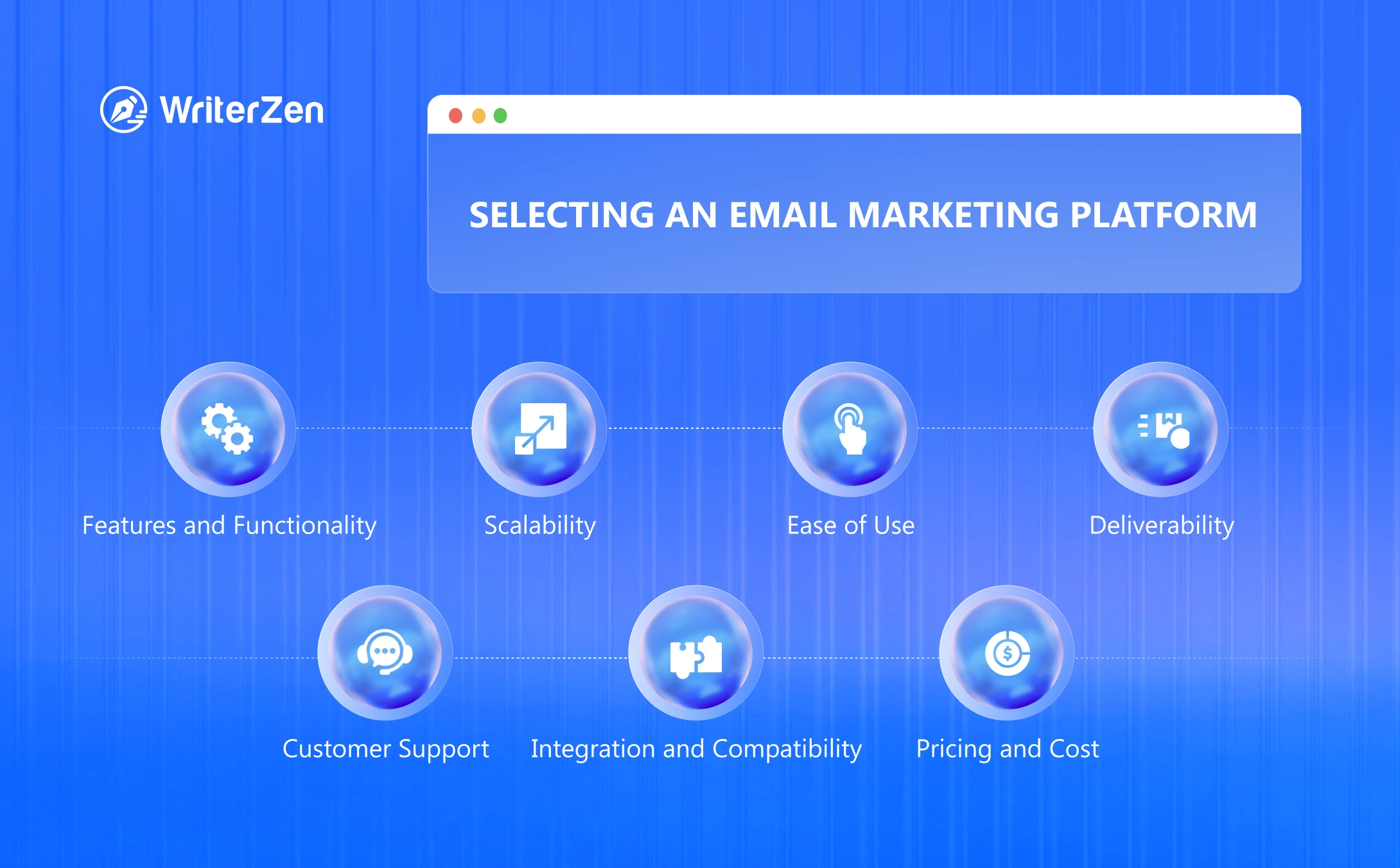
When implementing email marketing in your digital marketing strategy, the choice of an email marketing platform plays a pivotal role in managing your campaigns and effectively communicating with your audience. Here are key factors to consider when selecting a suitable platform:
-
Features and Functionality: Look for an email marketing platform that offers essential features such as list management, customizable email templates, automation workflows, and in-depth analytics. Consider advanced features like A/B testing, segmentation capabilities, and integrations with other marketing tools to enhance your campaign effectiveness.
-
Scalability: Ensure that the platform can accommodate your current and future needs. As your subscriber list grows, you'll require a platform that can handle increased email volumes while maintaining high deliverability rates. Flexibility in pricing plans is also important as it allows you to scale up as your business expands.
-
Ease of Use: Choose a platform that aligns with your team's technical skills and comfort level. A user-friendly interface and an intuitive email editor can simplify the process of creating and managing your email campaigns. Accessible support resources, such as documentation and tutorials, can also contribute to a smoother experience.
-
Deliverability: Email deliverability is critical to ensure that your messages reach your subscribers' inboxes. Research the platform's deliverability rates, reputation management practices, and compliance with industry standards to maximize the chances of your emails being successfully delivered.
-
Integration and Compatibility: Consider the platform's compatibility with your existing systems, such as customer relationship management (CRM) tools, e-commerce platforms, or marketing automation software. Seamless integration can streamline data management and enhance your overall marketing efforts.
-
Customer Support: Evaluate the level of customer support provided by the platform. Responsive support channels, comprehensive documentation, and an active user community can be valuable resources in resolving technical issues or seeking guidance.
-
Pricing and Cost: Compare the pricing structures offered by different platforms, including subscription plans, pay-as-you-go options, and any additional fees for advanced features or premium support. Consider your budgetary constraints and balance them with the platform's features and capabilities.
Final Thoughts
Email marketing, when done thoughtfully and strategically, can be a powerful tool in your digital marketing arsenal. By understanding its different types, goals, and implementation techniques, you can establish meaningful connections, drive engagement, and achieve your business objectives.


